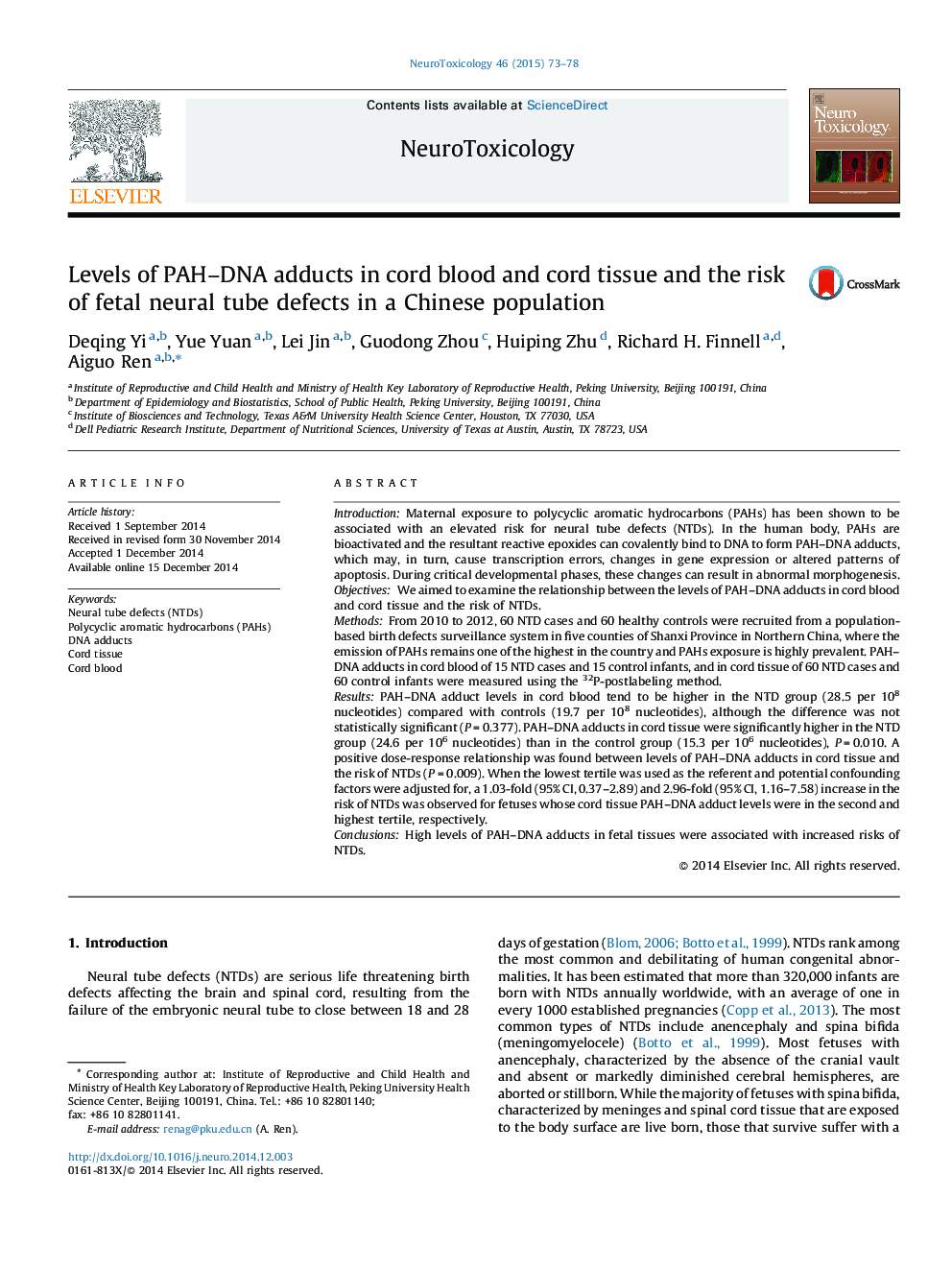| کد مقاله | کد نشریه | سال انتشار | مقاله انگلیسی | نسخه تمام متن |
|---|---|---|---|---|
| 2589604 | 1562048 | 2015 | 6 صفحه PDF | دانلود رایگان |

• PAH–DNA adducts in cord tissue and cord blood of neural tube defects affected fetuses and healthy infants were detected.
• We used the 32P-postlabeling method to detect the PAH–DNA adducts levels.
• Subjects were recruited from a population-based birth defects surveillance system in Shanxi Province, where the concentration of PAHs emissions is amongst the highest in the country.
• High levels of PAH–DNA adducts in fetal tissues were associated with increased risks of neural tube defects.
IntroductionMaternal exposure to polycyclic aromatic hydrocarbons (PAHs) has been shown to be associated with an elevated risk for neural tube defects (NTDs). In the human body, PAHs are bioactivated and the resultant reactive epoxides can covalently bind to DNA to form PAH–DNA adducts, which may, in turn, cause transcription errors, changes in gene expression or altered patterns of apoptosis. During critical developmental phases, these changes can result in abnormal morphogenesis.ObjectivesWe aimed to examine the relationship between the levels of PAH–DNA adducts in cord blood and cord tissue and the risk of NTDs.MethodsFrom 2010 to 2012, 60 NTD cases and 60 healthy controls were recruited from a population-based birth defects surveillance system in five counties of Shanxi Province in Northern China, where the emission of PAHs remains one of the highest in the country and PAHs exposure is highly prevalent. PAH–DNA adducts in cord blood of 15 NTD cases and 15 control infants, and in cord tissue of 60 NTD cases and 60 control infants were measured using the 32P-postlabeling method.ResultsPAH–DNA adduct levels in cord blood tend to be higher in the NTD group (28.5 per 108 nucleotides) compared with controls (19.7 per 108 nucleotides), although the difference was not statistically significant (P = 0.377). PAH–DNA adducts in cord tissue were significantly higher in the NTD group (24.6 per 106 nucleotides) than in the control group (15.3 per 106 nucleotides), P = 0.010. A positive dose-response relationship was found between levels of PAH–DNA adducts in cord tissue and the risk of NTDs (P = 0.009). When the lowest tertile was used as the referent and potential confounding factors were adjusted for, a 1.03-fold (95% CI, 0.37–2.89) and 2.96-fold (95% CI, 1.16–7.58) increase in the risk of NTDs was observed for fetuses whose cord tissue PAH–DNA adduct levels were in the second and highest tertile, respectively.ConclusionsHigh levels of PAH–DNA adducts in fetal tissues were associated with increased risks of NTDs.
Journal: NeuroToxicology - Volume 46, January 2015, Pages 73–78